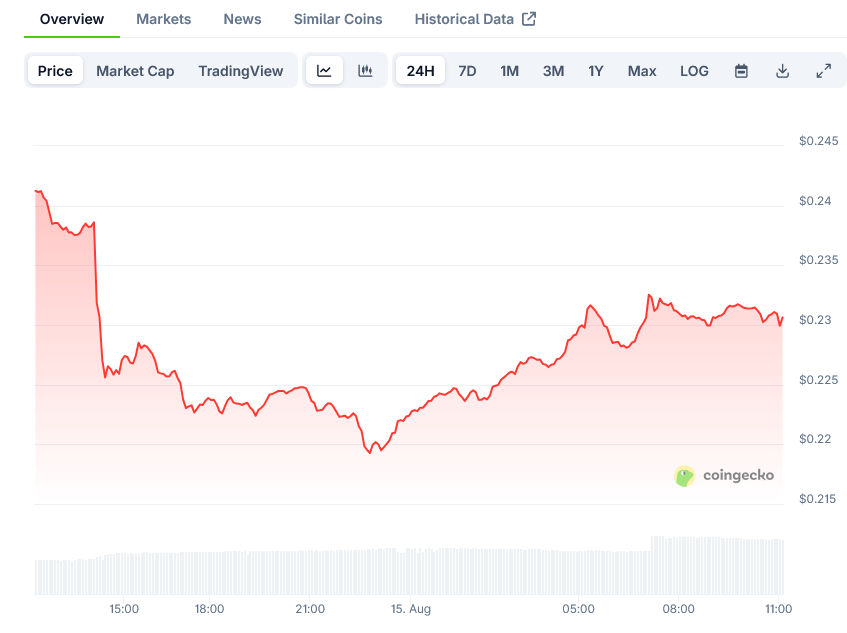TLDR
- Whales purchased 2 billion DOGE (worth $480 million) in the past week
- DOGE has decoupled from BTC and BNB, falling 3% while other top cryptocurrencies gain
- Despite 27% monthly growth, DOGE struggles to reclaim previous highs
- Spot investors added $32 million in buying pressure
- Liquidity clusters on charts show potential for movement in either direction
Dogecoin has shown mixed signals recently, with substantial whale accumulation occurring despite price struggles relative to other major cryptocurrencies. The popular memecoin has experienced notable buying activity from large investors while failing to match the all-time highs achieved by Bitcoin and Binance Coin.
Over the past week, whale addresses have purchased approximately 2 billion DOGE, valued at $480 million. This substantial acquisition by large-scale investors suggests strong potential for a price breakout in upcoming trading sessions.
Spot market investors have also contributed to the buying pressure, though at a much smaller scale. According to CoinGlass data, these retail investors added another $32 million in net inflows, bringing the total liquidity injection to just over $500 million.
Despite this influx of capital, DOGE has declined 3% over the past 24 hours. This performance contrasts sharply with other top-10 cryptocurrencies by market capitalization, which have continued gaining momentum.

The memecoin has posted a 27% rise over the past month, yet struggles to reclaim previous highs. This stands in stark contrast to Bitcoin and Binance Coin, which both reached new all-time highs last week, while Ethereum moves closer to its own record.
Liquidity Flows Reveal Market Dynamics
Chart analysis points to liquidity outflows as a major factor in DOGE’s underperformance. While investors sold their DOGE holdings, much of that liquidity appears to have flowed into Bitcoin and Binance Coin instead.
The divergence is particularly evident when examining price action between May 10 and June 22. During this period, DOGE fell by 39%, while Bitcoin dropped just 3.72% and Binance Coin declined by 7.06%.
In the recovery phase that followed, DOGE merely returned to break-even levels, while BTC and BNB secured much stronger gains, eventually reaching new heights.
Liquidity charts from CoinGlass reveal DOGE currently trading between two major clusters. The upper cluster could act as a supply zone, potentially triggering selling pressure if tested. Conversely, the lower cluster may function as a demand zone, possibly pushing prices higher if reached.
Whale Activity Increases
On-chain data from Santiment shows the 100 million to 1 billion DOGE holder group has been actively accumulating. These large investors have added 2 billion DOGE (worth approximately $448-480 million) to their holdings over the past week.
This substantial whale accumulation has been accompanied by increased transaction activity. The Whale Transaction Count, which measures transfers involving sums greater than $1 million, has seen a significant spike recently.
The current price of Dogecoin stands at approximately $0.22, reflecting an 8% decrease over the past day. This recent decline comes despite the substantial buying activity from whale addresses.
Given the broader market’s bullish momentum and heavy whale accumulation, many analysts believe DOGE is more likely to trend higher in coming sessions. However, any push into the upper liquidity zone could trigger significant selling before attempts at reaching new highs.
For now, Dogecoin remains locked between key price zones, with whales continuing to accumulate while the price awaits a definitive breakout direction.




